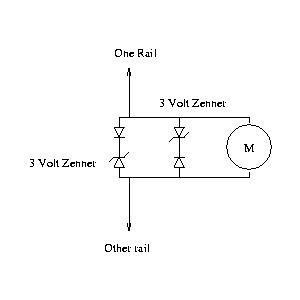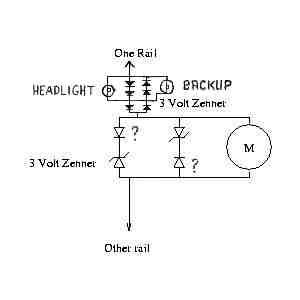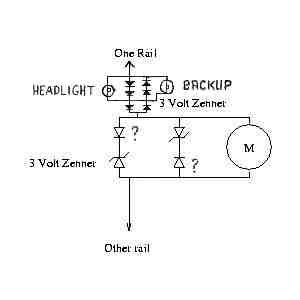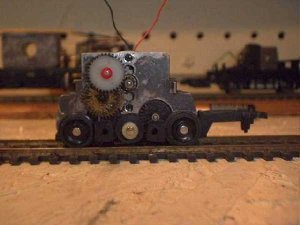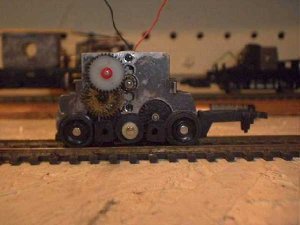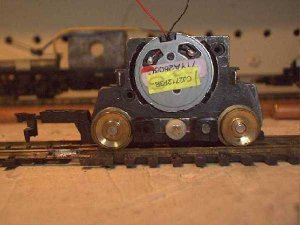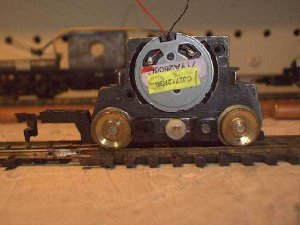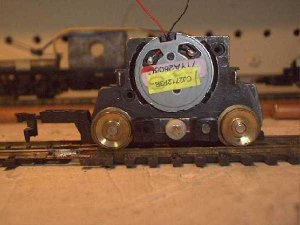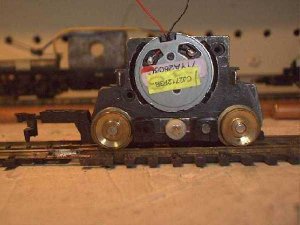Hi,
I put a 3 volt motor From a portable CD player in a tyco power truck. Now I need to reduce the
voltage inside the engine so it uses the same powerpack, 18 volts. A
resistor may be all that's needed. BUT, I want a circut that uses the
first 5V for constant intensity lighting and power for other electronic
circuts, then what's left to control the motor speed using the rest of
the 5-18V to regulate the 0-3V motor voltage proportionaly. Sounds easy
enough. BUT, what if the other powerpack you're using is a 0-12V? Any
ideas?
If I can make this circut work and make it small enough, I can use
those matchbox size RC car motors in an N scale engine.You can get the
motors at Radio Shack.
Ray
I put a 3 volt motor From a portable CD player in a tyco power truck. Now I need to reduce the
voltage inside the engine so it uses the same powerpack, 18 volts. A
resistor may be all that's needed. BUT, I want a circut that uses the
first 5V for constant intensity lighting and power for other electronic
circuts, then what's left to control the motor speed using the rest of
the 5-18V to regulate the 0-3V motor voltage proportionaly. Sounds easy
enough. BUT, what if the other powerpack you're using is a 0-12V? Any
ideas?
If I can make this circut work and make it small enough, I can use
those matchbox size RC car motors in an N scale engine.You can get the
motors at Radio Shack.
Ray


